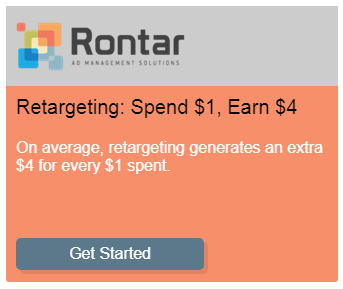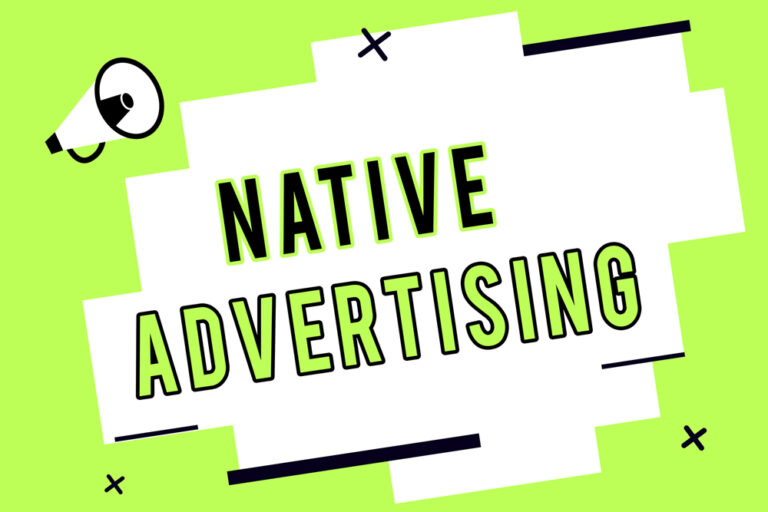Storytelling: Introducing a New Approach to Retargeting

Retargeting as a tool has been on the market for many years. There are lots of ad networks where you can run retargeting.
In the majority of cases when we launch retargeting, we limit ourselves to only one advertising banner, which is usually ordered from a designer. Sometimes we use multiple banners to find the banner with the highest CTR. We also sometimes switch banners, but we rarely go beyond that.
The same applies to launching dynamic retargeting. As a rule, we simply configure a dynamic creative, including its appearance, and the retargeting platform determines which products should be shown in the creative based on user behavior on your site as well as other parameters. The appearance of the creative basically doesn’t change – it is still the same product banner.
There are several disadvantages to this approach to retargeting:
- Ad fatigue. Most retargeting platforms show your creatives to visitors for 30 days. Over all of that time, your former visitors are seeing the same banner. After just a few days, they develop ad fatigue, which means they stop noticing your banner. This reduces the CTR of the banner, and, consequently, increases the cost of clicks and conversions.
- The visitor doesn’t move down the sales funnel. When a visitor leaves your site without buying anything, it means that for some reason they are not ready to buy. There could be many reasons for that. Perhaps they don’t have any money at the moment and are waiting for their next paycheck. Or maybe they have some objections which your site couldn’t provide answers to. It’s also possible you’re selling a relatively expensive product and your company is not well known on the market, so the visitor simply isn’t ready to buy from you due to a lack of trust. When you show the same banner that directly advertises your company or product/service, you can only reach those visitors who were originally interested in buying from your site but who didn’t for various reasons. And you can only do that in the first few days after the visitor is on your site. In the future they will develop ad fatigue and simply stop noticing your advertisement, even if they were initially interested in buying.
- You aren’t improving your company’s thought leadership. This is partially related to the previous point. Retargeting is not just clicks and conversion, it is also branding, meaning increasing the visibility of your company. Also, when you use retargeting, you can increase the thought leadership of your business or specific individuals in the company who are associated with it. Even if you use only one creative that directly advertises your company, you will really increase company awareness, as you will always be in front of your target audience (again, this advantage of retargeting is partially leveled by ad fatigue). As for thought leadership, the same approach to retargeting wouldn’t affect it at all.
Now let’s forget about retargeting a little, and have a look at email marketing. In email marketing, there is such a thing as lead nurturing. This concept is well known to SaaS companies and especially to online stores. As soon as a person is on your email list, they are sent an email sequence in which the email marketer tries to push the lead down the sales funnel. This approach is also called drip marketing.
For example, a visitor goes onto the company’s website and downloads an ebook created by the company. The visitor leaves their email, name, as well as some information about their company and position, thus becoming a lead. After that, they are sent a welcome letter thanking them for downloading the ebook, after which they are sent a link to a post on your blog, then your case studies, then a special offer, and so on. The chain of emails can be of any length. But each email is generally aimed at handling a particular objection that could arise from your potential buyers. As soon as all the objections are handled, there is an attempt to make a sale. This is either also done via email, or their contact information is given to the manager in charge who then makes the call. Or there are both an email and a call.
Exactly the same approach can be used in retargeting. In other words, a series of banners is created and it is shown to the visitor in a given sequence over a long period of time. Rontar allows you to set up this kind of advertising campaign. It’s especially convenient that you won’t need to communicate with a designer to make a bunch of creatives. You can do it all yourself with the help of a responsive banner designer within the system. It generally doesn’t take more than 10-15 minutes, even if the chain is really long. You upload your logo, set the heading, description, button text, and colors. The system itself will generate banners in all the most popular sizes.
Here’s what a chain of banners might look like:
- Day 1-3. Show a creative that directly advertises your service/product/company. There is always a proportion of visitors who are ready to buy from you on the site here and now, but for some reason do not. For these visitors, your most standard banner will be the best solution.
- Day 4-6. Show case studies. This will help you build trust in your brand. And by switching banners, you are also fighting ad fatigue.
- Day 7-9. Advertise a blog post directly related to the service you’re providing. Also make sure that you’re collecting leads on the blog post page and that the blog post itself has a good conversion rate.
- Day 10-12. Advertise your ebook. We are again collecting leads and increasing thought leadership.
- Day 13-15. Show our standard creative again. It makes sense to periodically show the main banner that is aimed at conversion here and now.
- Day 16-18. Show case studies. Show the case studies again. Basically, if you have any marketing materials that do a good job of converting visitors into buyers, it makes sense to alternate them periodically. They are usually case studies, some special offers on the site, and so on.
- Day 19-21. Show another blog post. We are expanding thought leadership, collecting leads, and fighting ad fatigue.
- Day 22-24. Show customer reviews. They should preferably be reviews on a third-party resource rather than on your own site.
- Day 25-30. Show a banner with a special offer. This banner should be similar to the main banner but it should also include a special offer or a bonus.
Having built a similar chain, you can overcome ad fatigue, increase your thought leadership or that of your company, and, if the chain is built correctly, you can move the visitor down the sales funnel.
A few words about sales funnels. You can build communication with the user using retargeting in such a way that different ads respond to different objections that arise from your potential customers when communicating with your company’s sales department. This makes it easier for your sales team to close deals.
A few more words about creatives. All your banners should be made in your brand colors, yet still visually differ from each other. Or so that the creatives that are similar alternate rather than follow each other. This is so that the user doesn’t get visually used to your creatives.
Let me give you an example of what a series of banners for our company, Rontar, looks like. We are a retargeting company, so naturally, we do our retargeting through our own company.

Day 1-3. Our standard banner which leads to the main page of the site. This and all subsequent banners were configured using the built-in designer inside the Rontar system. As you can see, the banners are extremely simple, but our task is not to make a work of art out of a banner, but to convey useful information to a potential client, which they can then use to develop their business.

Day 4-5. A banner with reviews leads to a page with reviews of Rontar on a third-party website.

Day 6-7. We give additional information about our main product. As you can see, the banner style begins to alternate, but it uses all the same brand colors that we use throughout our marketing.

Day 8-9. Again, additional information about our product.

Day 10-11. We show our main banner again.

Day 12-13. Additional information about our product.

Day 14-15. In our case, one of the main objections is that many people already use retargeting on Facebook, so a potential client doesn’t need another retargeting provider. Ideally, if you are handling an objection in a banner, the link you click on should lead to your blog, where you handle the objection in detail. This is not only good for conversion, but it will also help your sales team close deals more easily.

Day 16-17. Responding to another client objection.

Day 18-19. Reviews again.

Day 20-21. We advertise an article on our blog showing how to correctly set up dynamic banners, thus increasing our thought leadership.

Day 22-23. We say that a personal manager is assigned to each advertising campaign to monitor its performance. This is one of our benefits that we want to convey to a potential client through the banner.

Day 24-25. We tell potential customers how best to evaluate the effectiveness of retargeting. Clicking on the link leads to our blog. In this way we are increasing our thought leadership while simultaneously collecting leads on the blog.

Day 26-30. We again show our standard banner.
In conclusion, a few words about the effectiveness of such a chain in terms of just clicks and conversions. If the message in your banners is chosen correctly, you can expect a significant increase in CTR. As for the CTR of individual banners, the more time that passes since the visitor first goes to the site, the less the probability there is of a click. Accordingly, the clickability of each subsequent banner will decrease, which is normal. However, there will still be banners in your chain that work better or worse than others. Try to replace banners that don’t get clicks.






